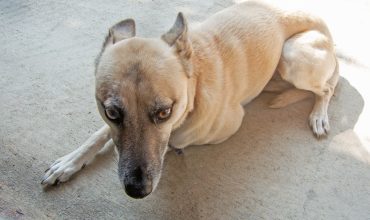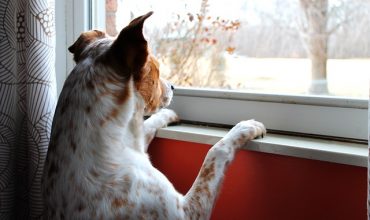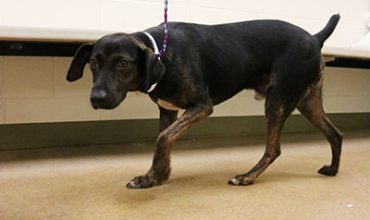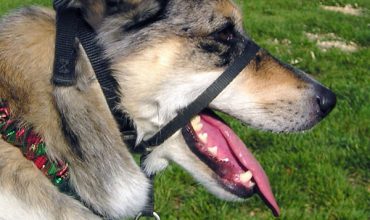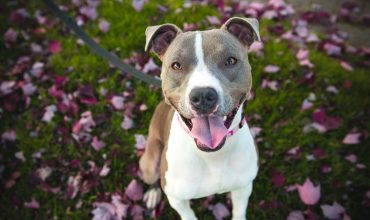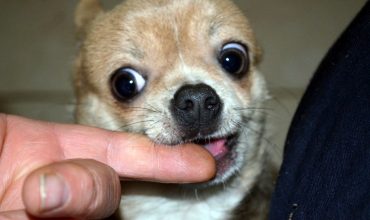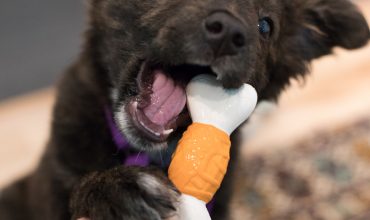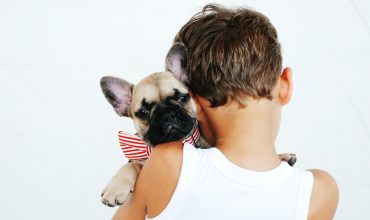[print-me] Submissive Urination Submissive urination occurs when a dog feels threatened. It may occur when he’s being punished or verbally scolded, or when he’s approached by someone he perceives to be threatening to him. It’s important to remember that this response is based on the dog’s perception of a threat, not the person’s actual intention. Submissive urination may resolve as your dog gains confidence. You can help to build his confidence by teaching him commands and rewarding him for obeying. You should also gradually expose him to new people and new situations and try to make sure all of his
Read More
Archives for Puppy or dog
Separation Anxiety
[print-me] Treatment for Mild Separation Anxiety If your dog has a mild case of separation anxiety, counterconditioning might reduce or resolve the problem. Counterconditioning is a treatment process that changes an animal’s fearful, anxious or aggressive reaction to a pleasant relaxing one. It’s done by associating the sight or presence of a feared or disliked person, animal, place, object or situation with something really good, something the dog loves. Over time the dog learns that whatever he fears actually predicts good things for him. For dogs with separation anxiety, counterconditioning focuses on developing an association between being alone and good
Read More
Helping Your Dog Overcome The Fear of Thunder And Other Startling Noises
It’s not uncommon for dogs to be frightened of thunder, firecrackers or other loud sounds. These types of fears may develop even though your dog has had no traumatic experiences associated with the sound. Many fear-related problems can be successfully resolved. However, if left untreated, your dog’s fearful behavior will probably get worse. The most common behavior problems associated with fear of loud noises are destruction and escaping. When your dog becomes frightened, she tries to reduce her fear. She may try to escape to a place where the sounds of thunder or firecrackers are less intense. If, by leaving
Read More
The Fearful Dog
[print-me] This dog is a dog who has been fearful while in shelter and has taken longer than most to adjust to new situations. This dog should be given a significant amount of time to decompress and adjust once in the adopters home before adopters attempt to bring the dog new places or introduce new people or animals. Understanding and responding to the dogs’ body language will be very important in helping this dog adjust comfortably to his/her new home. Dogs who are fearful may attempt to communicate and/or show their fears in a variety of ways including; panting, pacing,
Read More
Desensitizing Dog to Head Halter
[print-me] Do the following exercises in order without skipping steps. The goal is to keep the dog comfortable the ENTIRE TIME. You want this to be like learning a trick. As the dog gets better and more excited to continue on, we progress through the steps. If the dog at any time is uncomfortable, go back a few steps to where the dog is comfortable and work that step a few more times before moving on. Hints & Tips Use no more than pea sized treats since you will be using so many Each head halter will be fitted by
Read More
Loose Leash Walking
[print-me] Things You’ll Need A standard leash, not a retractable or extendable leash. A bag full of treats he loves! A Gentle Leader chest harness can be a very helpful tool in teaching loose leash walking, especially for strong or bigger dogs. Do not use a standard harness that clips on the dogs back or you may be encouraging pulling. Also do not use any choke or prong collars. Those are not necessary and can be both painful and dangerous for your dog. Get Walking Fill your bait bag with treats, and put your dog on leash. You’ll want to
Read More
Teaching Ring Bell to Go Outside
It is quite simple to teach your dog to touch a bell with his nose. You can then hang the bell from a doorknob to let him ring when he needs to be let outside.
Read More
Dealing with Normal Puppy Behavior: Nipping
[print-me] When puppies play with each other, they use their mouths. Therefore, puppies usually want to bite or “mouth” hands during play or when being petted. With puppies, this is rarely aggressive behavior in which the intent is to do harm. Because puppies are highly motivated to exhibit this type of behavior, attempts to suppress it or stop it are unlikely to be successful unless you give your puppy an alternative behavior. The goals of working with this normal puppy behavior are to redirect your puppy’s desire to put something in her mouth onto acceptable chew toys and to teach
Read More
Dealing with Normal Puppy Behavior: Chewing
[print-me] Puppies may be just as much work as human babies – maybe more so because puppies can’t wear diapers and they have very sharp teeth! It’s definitely true that, similar to infants and toddlers, puppies explore their world by putting things in their mouths. In addition, puppies are teething until they’re about six months old, which usually creates some discomfort. Chewing not only facilitates teething, but also makes sore gums feel better. Although it’s perfectly normal for a puppy to chew on furniture, shoes, shrubbery and such, these behaviors can be a problem for you. A puppy won’t magically
Read More
Children and Dogs: Important information for Parents
[print-me] Living with a pet can be beneficial to children. Pets can enhance a child’s self-esteem, teach them responsibility and help them to learn empathy. However, children and dogs are not always going to automatically start off with a wonderful relationship. Parents must be willing to teach the dog and the child acceptable limits of behavior in order to make their interactions pleasant and safe. Selecting a Dog What age is best? Many people have a “warm fuzzy” image of a puppy and a child growing up together. If you have a young child and are thinking of adopting a
Read More




